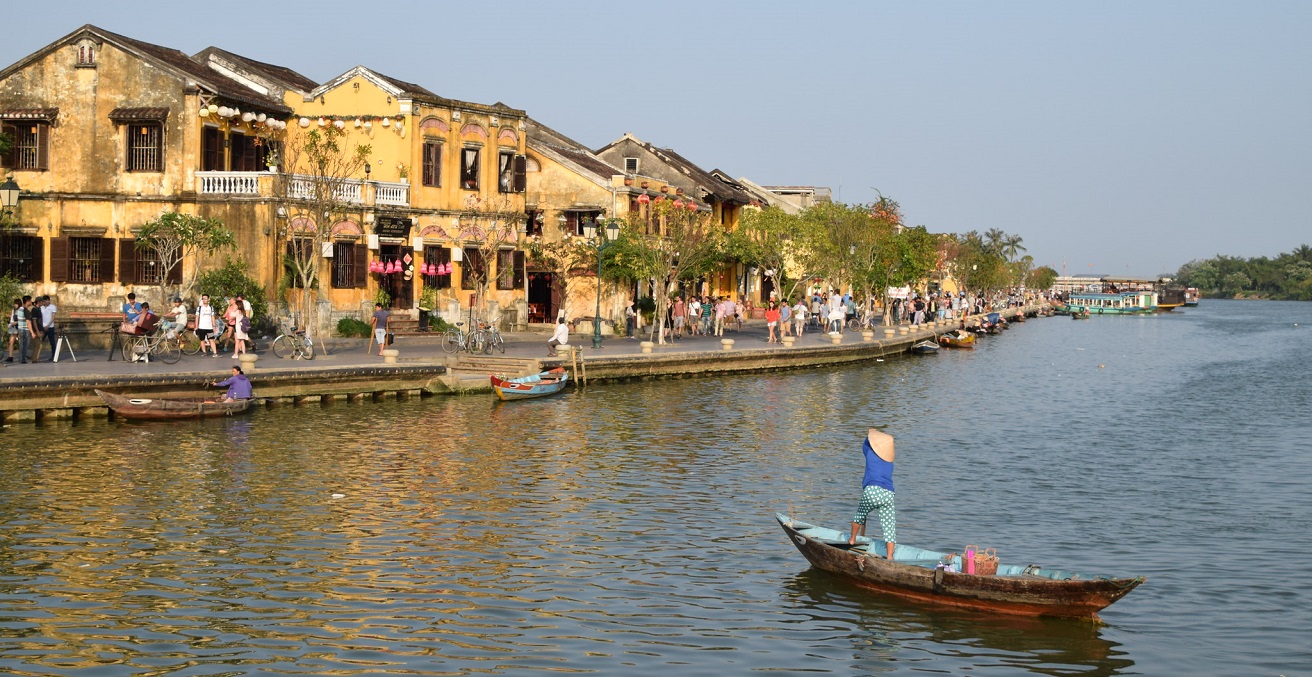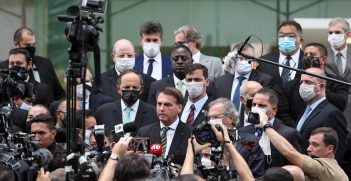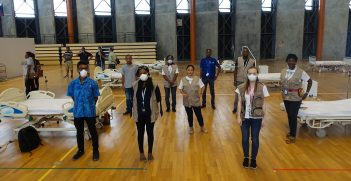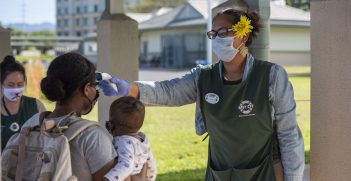Plotting Vietnam’s Endgame

Vietnam seems to be handling the Coronavirus outbreak exceptionally well. As life has changed dramatically, the Vietnamese have remained vigilant and hopeful that they will overcome the challenges posed by the pandemic.
The first rice harvest of the year is less than a month away, and a panoply of kites catch the prevailing south-east wind as it ripples through the green fields. This is Week 11 of total school closure across Vietnam, and the kids have been home since two days before Tet. The Vietnamese lunar calendar, like neighbouring China’s, ushered in the Year of the Rat on January 25 and the portents at that point were largely free of pestilence. Things have changed remarkably since then at a global level, but Vietnam has not suffered any plague of epidemic proportions – at least, not yet.
As China’s first cohort of infections in Hubei Province spiked above 1000, Vietnam confirmed its first two cases of what became known as COVID-19 on the last day that Vietnamese students came home from school. The official total of infections in Vietnam crossed 100 on March 22 and now sits at 262, still with zero deaths – this in a country with a population of around 100 million.
To think that Australia’s detected coronavirus infections went from 248 cases to 1098 in the course of a week is an astonishing contrast, particularly when considering the relative difference in total population, let alone population density. There may be lessons to share in what has transpired.
Certainly, decisive action is easier in a one-party state, but leaders still need to bring the people along with them. Quickly deploying a catchy anti-coronavirus video that spawned dance memes on TikTok certainly helped spread the word on hygiene, public gatherings, and the use of facemasks. An important component of the public messaging was that Vietnam was determined to resist and triumph over this silent invader, which has played into the patriotic hearts and minds of citizens.
Economically, the tourism sector has been hit hard – like the 90 percent decline in hotel bookings this February for the UNESCO-listed town of Hoi An, just south of Danang in the central part of the country. From mid-January onwards, it should have been one of the peak periods for visitors. But by early February, there were almost no visitors from either China or Korea, the two biggest inbound markets. Walking around, the old town was eerily quiet.
For the first few weeks of February, it was difficult to believe that the official numbers were less than 20. Speculation mounted that the village cordoned off in northern Vinh Phuc province, which held workers who had returned home from Wuhan for the new year with some novel symptoms, could be just the tip of the iceberg.
Flights from mainland China were rapidly shut down from February 2, and by February 25, the Deputy Prime Minister announced that the 16 infected patients nationwide had all been cleared after testing negative twice. He also warned that this small victory was only the first battle.
Less than a week later, after 22 days without a new case of infection and the closure of all flights from a rapidly escalating situation in South Korea, the Deputy PM was proven correct. The now notorious Case #17 of Nguyen Hong Nhung broke, the first instance of the virus looping back to Vietnam from Europe – implicating Italy and France as possible origins before flying into Hanoi from London.
Her infection was not reported for several days, which led to a nationwide alert to follow in the steps of the 150 passengers onboard Flight VN054. The weekend of March 6 heralded the “second wave” of infections which came not from China’s ground zero, but from flights arriving from UK, Korea, Singapore, Thailand, Qatar, UAE, Turkey, Russia, US, and Malaysia. As with Case #17, some of these cases did not get picked up until days after the flights had landed, which meant the authorities have had to track-and-trace where these people have been – eminently possible given Vietnam’s internal security system for foreigners and citizens alike.
Much of Vietnam’s response has developed along the lines of what John Daley from The Grattan Institute called Endgame B – and it is still possible that it might succeed. The total number of cases remains low, airline vectors are declining towards zero, and land borders with neighbouring China, Cambodia, and Laos have closed rapidly. The issuance of a publicly available app giving citizens the ability to report their health online, or to report other relevant information about COVID-19 concerns, has galvanised public participation. The NCOVI app plots locations of infected cases (F0) and those persons and places that have interacted with the COVID-19 cases (F1). As an information source, it has become a repository of official facts as they stand, which has increased transparency and given those in Vietnam confidence that positive action is taking place.
An important difference in Vietnam is that there is no more voluntary isolation – the two-week detention is mandatory, closing off the Achilles Heel enforcement component that Daley notes in his scenario modelling for Australia. What Vietnam has also done by not reopening schools since 23 January reflects a crucial element of Daley’s Endgame C example – stop and restart – in minimizing activity and interactions. Since March 19, citizens have been urged to stay at home, and freedom of movement is still allowed. If likelihood of infection is detected, localities are closed off, premises are disinfected and potential COVID-19 carriers are taken for testing and isolation.
This is where the Australian measures limiting outdoor/indoor gatherings to persons observing voluntary social distancing seems a little too trusting. The masses assembling on Bondi Beach indicated that the COVID-19 threat had not seriously entered Australia’s social consciousness. By contrast, that same day, while driving my motorcycle to the river, a neighbor shouted at me in English “where is your mask?” – reminding an errant foreigner that he had forgotten a crucial step, if only an important signal of solidarity, in Vietnam’s community response to beat the disease.
As the pandemic sweeps increasingly across Europe, Vietnam has stopped issuing visas with few exceptions. Only Vietnamese citizens can return now. All passengers coming from Europe since March 15 have had samples taken for COVID-19 testing before being transported to quarantine centres for 14 days – facilities for which are being expanded into state-run hotels and vacant school campuses to accommodate up to 60,000.
On the usually chaotic streets, Vietnam looks unusually quiet. Many shopfronts are shuttered, hotels are operating on skeleton staff, if at all, pleasure craft are confined to the harbor, and many workers have lost their jobs or are working limited hours – particularly in the hospitality sector.
People are worried, but following information updates vigilantly. Overall, hope still prevails. Messaging is everywhere – online, in print, on TV, banners, and billboards, and via some old-school propaganda art (distributed over the interwebs), which encourages people to stay at home, and by doing so, love their country.
On Sunday 22 March, everyone received a personal text message from the PM to follow all precautions to fight COVID-19. It ended with a note that translates roughly as “every citizen is a warrior on the frontier against this epidemic.”
James Compton is an independent contributor and alumnus of the Asialink Leaders programme, currently living in Hoi An, Vietnam.
This article is published under a Creative Commons Licence and may be republished with attribution.





